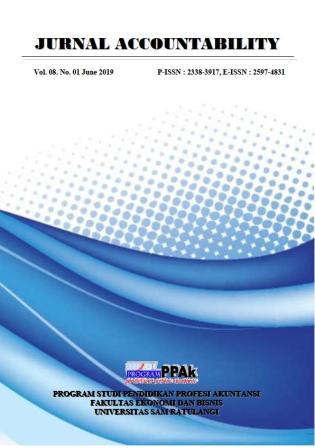TRUST VALUE OF A DIVIDEND : AN EVIDENCE FROM INDONESIA
Keywords:
dividend policy, share price, corporate tax, current ratio, earnings per share, debt equity ratioAbstract
Even though there are many issues surrounding dividend policy, dividend remains one of the main goals for investors to achieve. The aim of this study is to find out determinants of dividend policy in Indonesia. Most of the samples in observed period have varieties of dividend policies. Data for this study was collected from 258 business entities in the period between 2009 and 2012. For hypotheses testing, a binary logistic regression and factor analysis were used. The result from binary logistic regression showed that share price, earnings per share and current ratio are significant factors for dividend policy, while debt to equity ratio and corporate tax are insignificant. The insignificance of debt and tax was probably due to current ratio affected by accounting adjustments. Even though debt and tax are insignificant, they could not be ignored. Using factor analysis, it is confirmed that, most companies in this study have a similar objective through dividend policy, which is to maximize their share value in the stock market by considering profitability and liquidity on cash availability and also debt and tax. Dividends as a form of “trust value†offered by companies to their shareholders stimulate the trust of investors or shareholders and resulting the increase of share price.
Downloads
Published
Issue
Section
License
The articles published in Jurnal Accountability are licensed under Creative Commons Attribution-NonCommercial 4.0 International with authors as copyright holders.
Â

This work is licensed under a Creative Commons Attribution-NonCommercial 4.0 International License.
Â
- Share — copy and redistribute the material in any medium or format.
- Adapt — remix, transform, and build upon the material.
- The licensor cannot revoke these freedoms as long as you follow the license terms.
- Attribution — You must give appropriate credit, provide a link to the license, and indicate if changes were made. You may do so in any reasonable manner, but not in any way that suggests the licensor endorses you or your use.
- NonCommercial — You may not use the material for commercial purposes.
- No additional restrictions — You may not apply legal terms or technological measures that legally restrict others from doing anything the license permits.
- You do not have to comply with the license for elements of the material in the public domain or where your use is permitted by an applicable exception or limitation.
- No warranties are given. The license may not give you all of the permissions necessary for your intended use. For example, other rights such as publicity, privacy, or moral rights may limit how you use the material.


